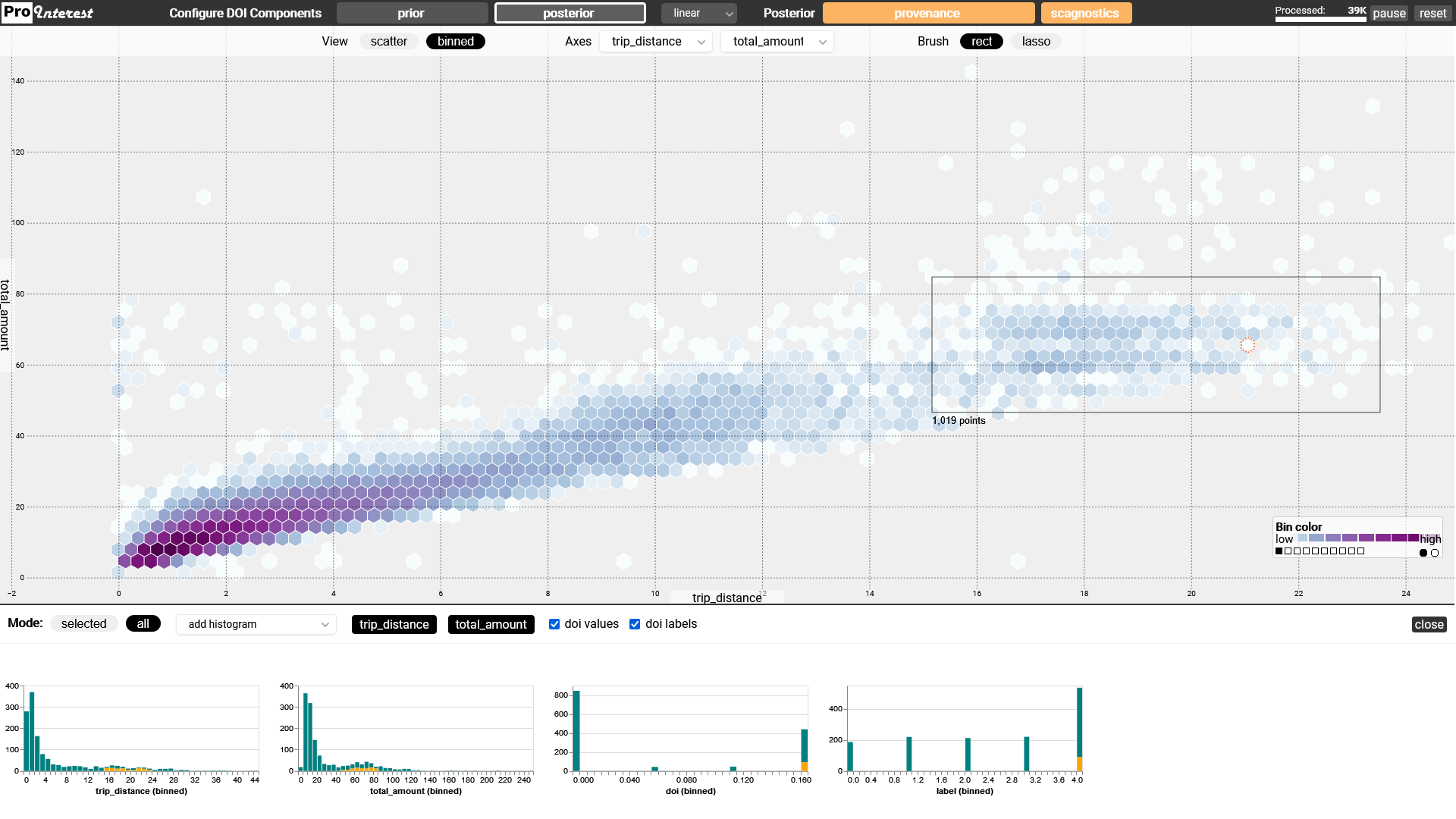Combining Degree of Interest Functions and Progressive Visualization
Presented at IEEE VIS 2023 - Melbourne, Australia
Authors
Marius Hogräfer, Dominik Moritz, Adam Perer, Hans-Jörg Schulz
Abstract
When visualizing large datasets, an important goal is to emphasize data that is relevant to the task at hand. A common way of achieving this is to compute the relevance of the data using degree of interest (DOI) functions, which apply a scenario-specific metric to quantify the data items according to their relevance to the users and their tasks. These DOI values can then be used to adjust the visual encoding through mechanisms like focus+context or information hiding.
For datasets too large to be visualized at once, an alternative approach is to visualize it progressively in chunks, allowing analysts to reason about partial results and concluding their analysis much earlier than had they waited for all data. Combining the advantages of both approaches to tailor the visualization seems synergistic, yet, in practice turns out to be challenging, as DOI functions require the context of all data to produce useful values, requiring lengthy computations that break analysts' flow in progressive visualization. In this paper, we propose an approach for uniting DOI functions with progressive visualization. We first introduce a new model for quantifying the user interest in analysis scenarios where the data is only partially available, by computing the interest for available data and predicting it for the rest. We then propose regression trees for implementing this approach in practice and evaluate it in benchmarks.
With DOI values now available for progressive visualization as well, our approach opens the door for tailoring the visualization of large datasets to the analysis task at interactive update rates.
Citation in BibTeX
To cite this article, we encourage you to use the following bibtex entry in your citation manager:
@INPROCEEDINGS{10360931,
author={Hogräfer, Marius and Moritz, Dominik and Perer, Adam and Schulz, Hans-Jörg},
booktitle={2023 IEEE Visualization and Visual Analytics (VIS)},
title={Combining Degree of Interest Functions and Progressive Visualization},
year={2023},
volume={},
number={},
pages={251-255},
doi={10.1109/VIS54172.2023.00059}}